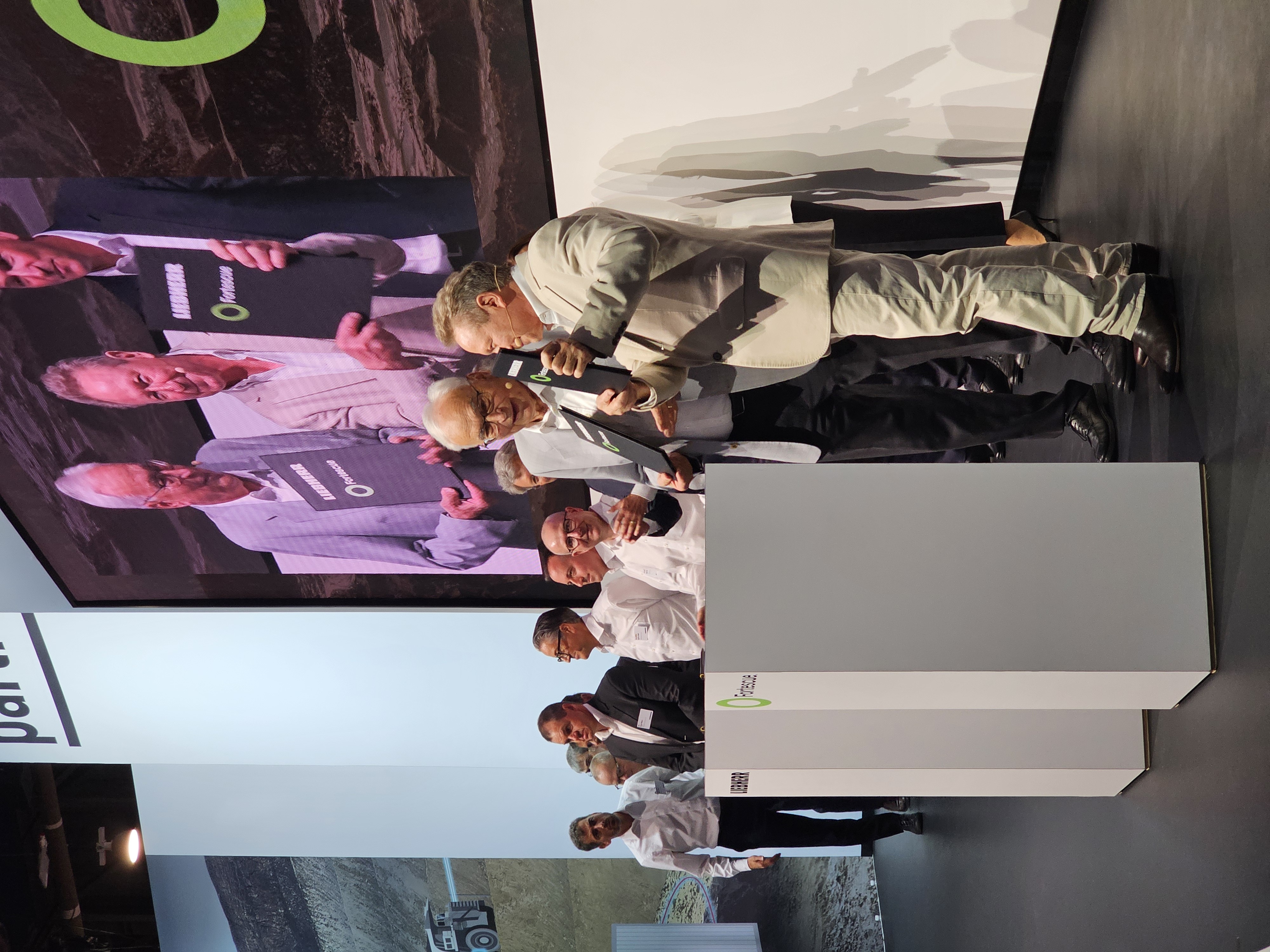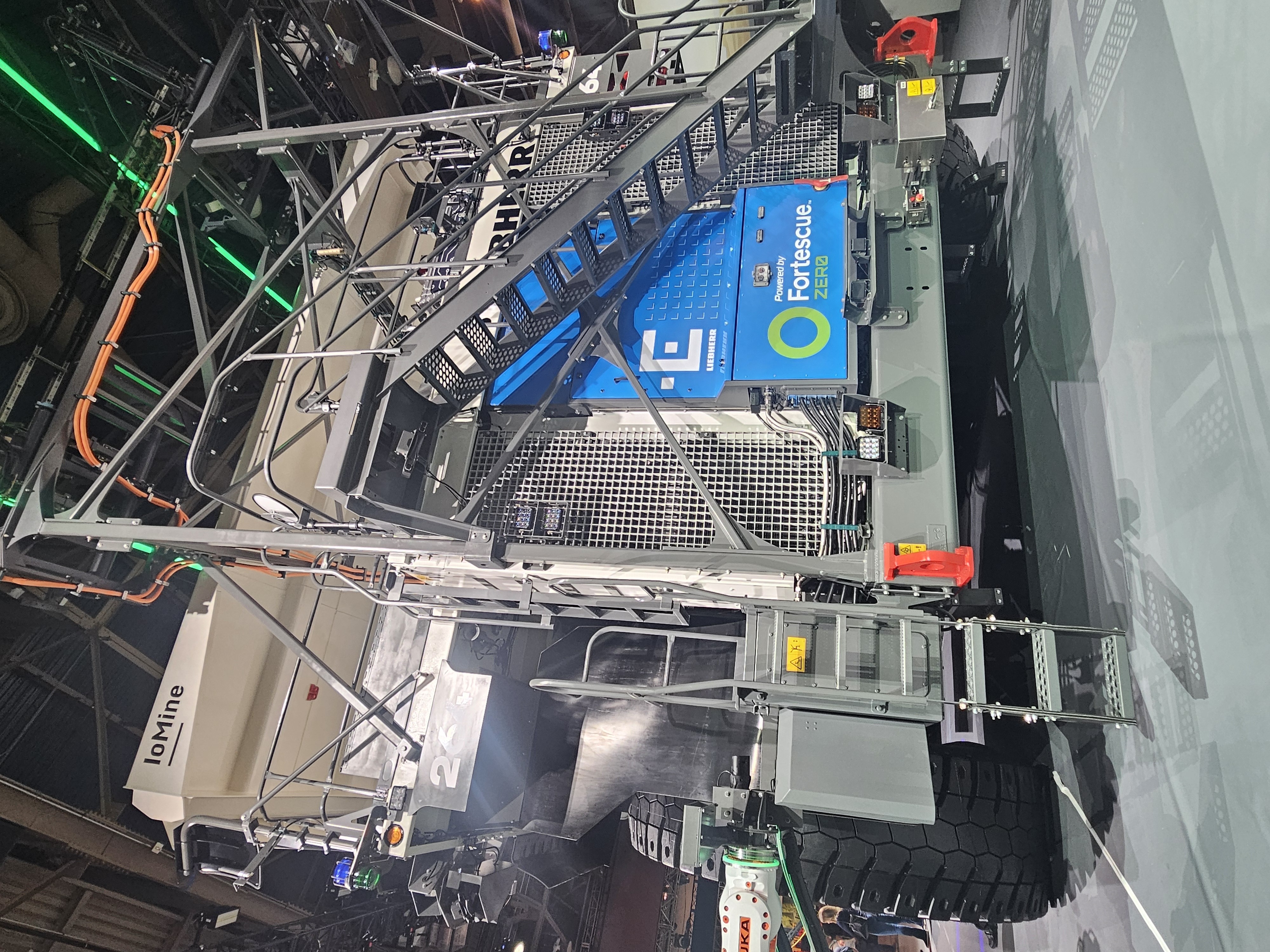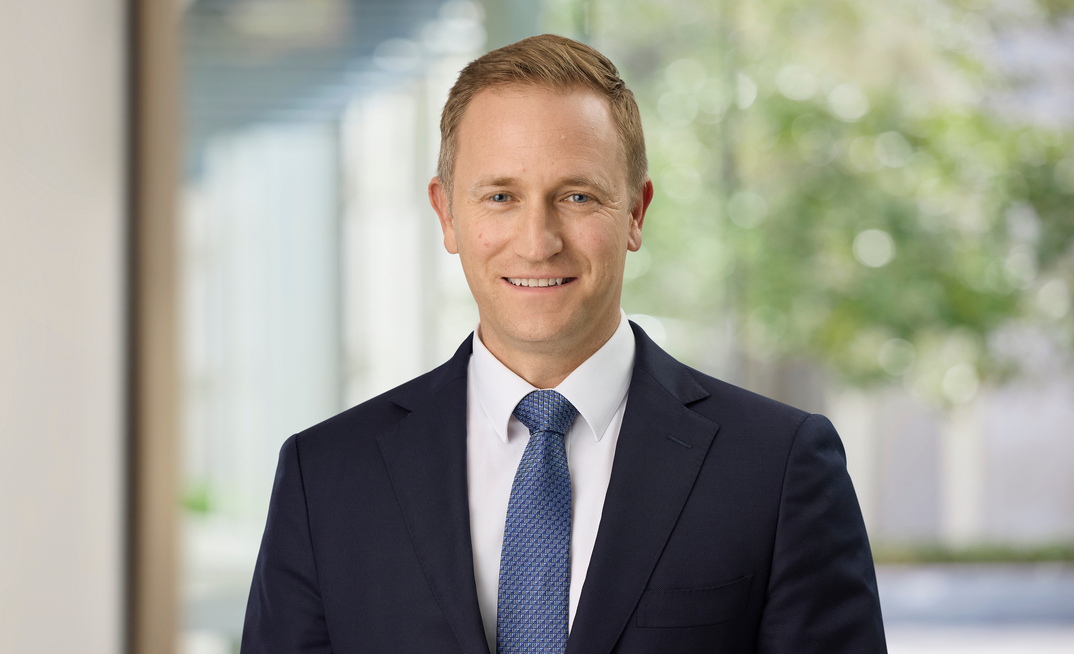As Fortescue announced several billion dollars worth of deals with equipment manufacturers at MINExpo 2024, all attention was on the Australian miner. With a focus that now includes energy, autonomous technologies and achieving "real zero" by 2030, the company sees itself as a major disruptor – with some justification. CEO Dino Otranto spoke to Mining Magazine at the event in Vegas and shared his thoughts on why others are slow to follow, how the company's agile approach makes it more like a technology company than a traditional miner, and issued a call to action to the sector.
Q: Can you tell us a bit about Fortescue and where you are today.
We're 21 years old. We started as an iron ore company and shipped nearly 200 million tonnes of iron ore of varying grades to the market, predominantly into China. A couple of years ago, we pivoted into energy, and also announced that we would turn our metals business completely green. At that time, it was net zero by 2030 and we've upped the ante – now we're real zero by 2030.
We've just announced with partners Liebherr one of the products on mine sites that needs to go green, our haul trucks. We also have an electric excavator on site, the 9400, and have just unveiled the T 264 which is a battery electric haul truck with our high capacity charger.
We are then changing the rest of the fleet on the mining environment, plus all the reticulation, all the poles and wires needs that are needed to distribute all of the electricity to all this equipment, and then also all the generation. So we're completely off grid. We're now installing between two to three gigawatts of solar and wind, all that will be done by 2030 and so that makes us the first company to actually produce a green iron ore for the market.
Q. Why are so few other mining companies as ambitious with their targets as Fortescue?
Generally, the mining industry has been criticised for the deployment of capital over the last generation. There's a natural apprehension about doing anything differently in the mining sector. Changing your complete fleet, for instance, from a typical diesel fleet to a fully electric fleet, involves some technological risk. What makes Fortescue unique we are not afraid of taking risks. Our entire company was started by taking a risk, and we've built an iron ore company from scratch to be the fourth biggest iron ore company in the world, the highest single returning stock on the Australian Stock Exchange ever. When we saw an opportunity to take our mining operations fully green by 2030, we started to seek out partners who would join us in this journey.
Q. Autonomous technology is also a risk. How has the testing period been for your autonomous equipment?
We have the largest autonomous fleet on the planet: more than 200 fully autonomous 240-tonne trucks that get operated 2,000km away between our mines and our capital city in Western Australia. For us, autonomy isn't really a risk anymore – we feel like we have mastered it. We are now transferring those skills into our fleet management solutions, our autonomy solutions, and collision avoidance and decarbonisation solutions. All those technologies are starting to come together now on a sophisticated technology platform.
Q. Can you now start rolling out this technology with equipment other than the trucks we have seen today?
That's correct. When we acquired Williams Advanced Engineering, where the software is so critical in the management of a Formula E racing car, we have been able to quickly adapt that software layer into our offering. We have a contract with Jaguar Land Rover, for instance, selling some of that software for their electric vehicles. You are starting to see applications far beyond mining – but for us, mining is the core focus for selling the mining software operating platform in the future.
Business, as we know it, is finished, and now you are seeing different collaborations across industry. Who would have thought that a mining company would partner with a traditional OEM, here at MINExpo?
Q. Rather than borrow from the automotive industry, you are doing it the other way around?
Business, as we know it, is finished, and now you are seeing different collaborations across industry. Who would have thought that a mining company would partner with a traditional OEM [original equipment manufacturer], here at MINExpo? It's unheard of to have the miner's logo on a truck, and that the OEM would accept that. The days have now passed us of the old piecemeal approach to selling our products. Those days over, and if we are really going to chase real zero, you need to think completely differently and partner at a whole different level.

Q. How do you create that culture of disruption internally at Fortescue?
We say that we like to burn our boats, to really test ingenuity and creativity. We give our people no other choice than to be successful in a different product. With the very first concept of a green truck, it took us less than 100 days to deliver. It didn't go for very long, and it didn't look great, but it went, and it proved a lot of doubters wrong. Here we are 24 months later with a product that looks the part, and you can order it now.
Q. Would you say you operate more like a tech company, like Tesla, for example?
Absolutely. The difference is we have this great mining company that our chairman has built for 21 years. It's very rare for a supplier of equipment to break into a market, whereas in our case, we have a large part of the market, so we are also the supplier of equipment to our very own mines. We don't have the bureaucracy [to deal with], we just get on with it.
Q. What are the advantages of using autonomous trucks?
First and foremost, you take the operator out of a truck, and unfortunately, in our industry, we see, still see fatalities happening with trucks rolling over. We are on the cusp of launching a product that is agnostic to machinery type, that can detect a collision between a heavy vehicle and a light vehicle, or a heavy vehicle to a heavy vehicle and apply proactive braking to both pieces of equipment and stop that collision from happening. It sits as a retrospective bolt-on to the braking pedal, and relies on that vehicle-to-vehicle technology we have developed.
Q. What is the ongoing role for the human?
We have a remote operating centre we call the hive. It is very akin to a beehive, where you have all the parts of the ecosystem working together; from my own role, to sales and marketing, to integrated suppliers to the controller. That controls all our remotely-operated mines as we become more disparate geographically.

Q. How does this new approach affect your training and recruitment?
Unfortunately, the mining industry has been over represented by men in the past, and large men at that, who can wield heavy things. The good thing that I see about how technology is being applied in a safety sense, is that it's allowing people from all different shapes and sizes to enter the market that have historically been excluded for one reason or the other, and we're finding this particularly being closer in location where a hive is to big operating centres. You can place these where there is a lot of population growth, people don' t need to fly-in-fly-out, they can be home every night and even dial in – it is a very different picture of operations than the one people might have in their head. Think about the Houston Space Station control centre versus a crusty old mine site.
Q. Young people often say they want jobs that involve new technologies and focus on sustainability. Does this approach help you to recruit compared to other mining companies?
This is what we use in our recruitment campaigns. Myself included – I joined this organisation because I wanted to make a difference. It's our generation and the generation ahead of us that are going to be impacted by the effects of what we've done to this planet. And there are a lot of people now doubting that and backsliding, but I think there's a groundswell, almost a revolution, manifesting itself. Through abating heavy industry like ours, you can make a real difference every single day. For us, it's a remarkable attraction mechanism that we didn't design.
You couldn't drag me away from this job. I absolutely love it. I shed a tear just on stage here, and that sounds so corny, but to stand there and see the product of a conversation which was just a concept only a couple of years ago, it just blows me away.
What we do is grounded in the harshest and hardest of realities. We're doing this in 50-degree heat, and we are proving everyone wrong.
Q. After Glencore said the pendulum had swung back on ESG recently, it seems there has been a bit of a backlash. What would you say to those who are quite cynical about the concept of sustainability in mining?
The cynicism is because it's difficult. It's like running a marathon – most people don't do it, because it takes discipline and it's hard. You can buy new equipment or personal training sessions, but the secret to running a marathon is getting up and running every day. Sometimes, what we do gets carried away with ‘wokeism', or some type of movement that isn't grounded in reality. What we do is grounded in the harshest and hardest of realities. We're doing this in 50-degree heat, and we are proving everyone wrong. This truck is real, you can order it today. My challenge to all my mining peers out there is ‘get on with it'. You now have no excuses not to go real zero. Net zero is gone, 2050 is ridiculous.
In Australia, we have the Snowy Hydro system, the Three Gorges project in China: men and women built that. Now, for some reason, something as simple as using a green truck is too difficult? I don't buy it. That's my call to action to all my peers.

























